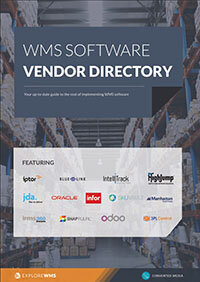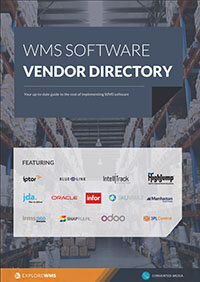Three common WMS security pitfalls (and how to avoid them)
Not every warehouse management system’s security is the same, so you might be staring down the barrel of a very dangerous gun. Protecting your company, staff, inventory, and facilities require a robust WMS security protocol.
Unfortunately, many systems on the market are not keeping warehouses as safe as they could. We’ve identified three of the biggest gaps in WMS security and provided a thought on how you can bridge those gaps for a safer, more profitable operation.
1. Reliance on old software
In most instances, the older your software and hardware, the greater the danger you face from cyber threats. Older systems may not support the latest upgrades, patches, or hardware specifically designed to increase security.
For instance, your WMS security may rely on on-premise solutions. Because your company has to pay for the hardware installation, maintenance, upgrades, and replacements you’ve likely got a broad mix of technologies.
Disparate infrastructure often needs to use the lowest common denominator technology, which could open you up to a wide variety of threats from the most sophisticated cyber intrusions to low-tech threats designed simply to bring your network down.
Cloud WMS is one of the most cost-effective ways to introduce advanced security into your operations, and your fellow professionals believe that too. A Clutch report recently found 64% of enterprises consider the cloud to be more secure than legacy systems, as well as noting that it makes it easier to take further security measures like data encryption and ID access policies.
2. Poor internal inventory controls
Internal theft is a problem for businesses, especially in the warehouse. According to a 2017 National Retail Federation study, half of inventory losses (about $22 billion each year) are due to employees. Losses occur when you have a weak WMS that doesn’t enforce check-in rules, daily inventory checks, or allows a single employee to verify inventory without authentication from others.
The good news is that improvements to WMS security can rectify many of these concerns without necessarily harming productivity. The chief way to combat internal theft is to have workers enter activity and transactions with identification that is specific to them.
Require check-in during every stage from reception and adding to inventory through picking, packing, and distribution. Not only does this make it harder for theft to occur but it creates an audit trail tied to each worker if a theft occurs.
An audit on how goods move through your warehouse can also help you identify potential theft opportunities and highlight training needs for employees who are not following proper procedure.
3. Who is that driver?
Warehouses experience a constant flow of traffic, and many of the people completing transactions in your warehouse won’t be employees. Drivers, delivery agents, maintenance or IT techs, and others will all have access to your warehouse at some point.
Does your WMS know who they are or capture information on them, or is there a potential for strangers or fraudsters to enter your property?
Your WMS security may leave your company open to risks if it isn’t automatically collecting or collating details such as license plates, yard access, or visitor intake, you could be opening yourself up to theft from outside sources.
License plate recognition technology is becoming more common in WMS and yard management tools because it also provides you with metrics on overall traffic. Take a look at this option for an improvement that also has operational benefits, making it a worthwhile investment for many.
Free white paper

WMS vendor directory
Save hours of WMS vendor research with this free guide

Featured white papers
Related articles
-

Warehouse picking and packing processes: how much labor do you need?
Logiwa's Erhan Musaoglu shows you how to calculate picking and packing labor requirements for you...
-

Mission-critical features of food lot traceability software
What features of food traceability software will help you during a food recall
-

Five key stakeholders in your WMS selection process
The stakeholders you will need on board for your WMS selection project, and what they can offer


